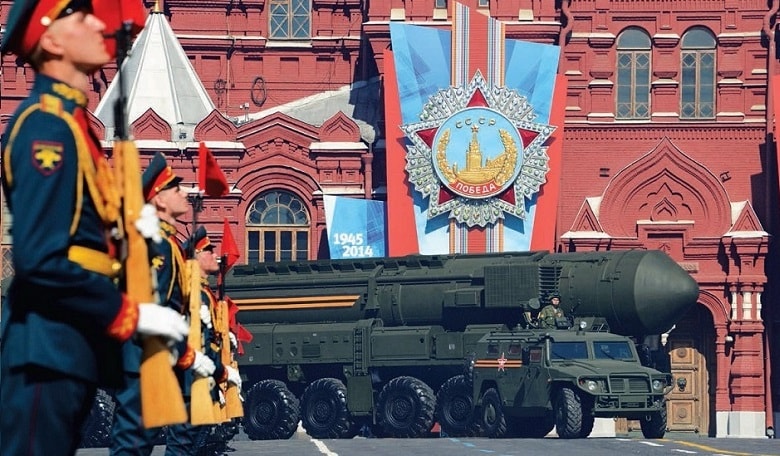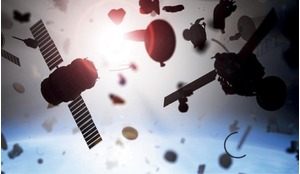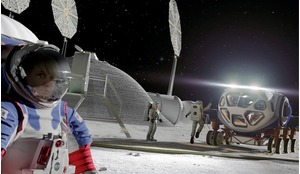In 2010, just as a genuine improvement was taking place in Russo-American relations, the then Russian President, Dmitry Medvedev, told his country’s parliament that the forthcoming decade could see the start of a new arms race. This was greeted with applause: Russia’s political class still think as they did in the Cold War. Even so, far from everyone took this prediction seriously.
Even in February 2014 it seemed that relations between Russia and its major Western partners, first and foremost with the USA, would continue to develop along well-established lines. Full partnership hadn’t been achieved, but old enmities had been laid to rest. The world changed and became multifaceted, so that nations competing militarily and politically are not doomed to strictly black-or-white relationships. They could remain rivals while co-operating even in the most delicate and technologically-complicated areas.
A symbol of this approach was Russian and American co-operation in space. Despite an unstable political relationship, NASA and the Russian Space Agency, Roscosmos, regularly sent crews to the International Space Station (ISS) and carried out space research. Just a few decades previously, space had been the main arena for strategic competition.
The crisis in Ukraine has re-created an atmosphere of confrontation, the likes of which Russia and the West had not known since the late 1980s. This about-turn in relations has affected relations in space too. On 2 April NASA announced that, “given Russia’s on-going violation of Ukraine’s sovereignty and territorial integrity, NASA is suspending the majority of its on-going engagements with the Russian Federation.” Nevertheless, it was also noted that, “NASA and Roscosmos will, however, continue to work together to maintain safe and continuous operation of the International Space Station.”
However, on 13 May the Russian Deputy Prime Minister, Dmitry Rogozin, who is responsible for his country’s space sector, cast doubt over any future space co-operation between Russia and the USA. He announced that he would ban exports of Russian-made rocket engines used to launch US military satellites, adding that Russia does not intend to continue co-operating with the United States on the international space program beyond 2020.
Space is a barometer for international relations. In space, strategic rivalry is inextricably linked with the need for serious strategic co-operation. And space reflects all of the contradictions which have yet to be solved in the quarter of a century which has passed since the end of the Cold War.
The Cold War was a unique period in world history. There was rivalry between two superpowers armed with the most destructive weaponry in the history of mankind; and yet this guaranteed an unprecedented stability in international relations.
From the start of the 1960s, nuclear missiles marked the line which the adversaries would not cross because of the threat of mutual destruction. This didn’t stop clashes on the periphery, battles between countries or groups, behind each of which there stood a superpower; but ‘global peace’ was maintained. As the 1980s ended and the 1990s began, this phenomenon disappeared; but it quickly became obvious that the character of the relations between the two main opponents didn’t change.
Even though it was clear who the victor was, there was no ‘peace treaty’. Indeed, it was as if there was no victory, since publicly everyone preferred to say that everybody had won, as confrontation had been avoided. In fact, everyone understood who had won and who had lost.
Could things have developed differently? In 2010-2011 Russia and the USA/NATO did discuss co-operation in the area which is considered the ‘holy of holies’ of national strategic security: missile defence.
Joint work on missile defence, based on a reduction in confrontation, was seen by politicians on both sides as the best way forward. If this had been taken to its logical conclusion, then we would sooner or later have reached the absurd situation where the missiles aimed at each other by the ‘enemies’ would have been countered by a jointly-constructed defensive shield.
It never happened, however. Even though serious discussions were begun after the Russia-NATO Summit of December 2010, in June 2011 the Secretary General of NATO, Anders Fogh Rasmussen, announced that the Russian proposals for the delineation of zones of responsibility were unacceptable, since NATO would never delegate responsibility for the security of its member states to an external partner.
After this, sporadic attempts were made to find diplomatic solutions, rather than military ones. Russia insisted on legal guarantees that missile defence systems were not against her, and at one time even suggested a simple political declaration to this effect. In the end, neither happened. It was clear that any attempt to tie America’s hands would meet with fierce resistance from Republicans in the House of Representatives, especially over something as dear to their hearts as missile defence.
Washington did put forward proposals about greater transparency and allowing observers access to information; but this did not suit the Russian side. The proposals did not even go as far as the verification procedures which had been in place under previous disarmament agreements. By the autumn of 2011 it was clear that there was nothing left to discuss, and the short farewell meeting in Honolulu between President Medvedev and President Obama merely underlined this.
Since then, relations between Russia and the USA have seriously worsened, and the question of creating a missile defence shield as a way of avoiding retaliation is likely to come up again.
The Ukrainian crisis has reminded many of the Cuban Missile Crisis of 1962. Friction between the two superpowers had been growing since the end of the 1950s. This reached its peak when the Soviet leadership, angered by the placing of American nuclear weapons in Turkey, decided to reply in kind and place nuclear missiles in Cuba. Washington introduced a naval blockade of Cuba. After a few days of extreme nervous tension, the Kremlin stood down; and a little while later the Americans quietly dismantled their systems in Turkey.
The Cuban Missile Crisis marked the boundary which the opposing sides were not prepared to cross. The danger of nuclear confrontation significantly declined – and both leaderships understood just what could happen if they behaved irresponsibly. Each side now understood the importance of strategic stability as the guarantor of a sustainable peace. It didn’t stop a mad nuclear arms race, but it virtually guaranteed that the weapons wouldn’t be used.
It was very difficult for the two main players to agree on anything, but at least they tried to stick to the rules and attempted to make others do so, too. Local conflicts in Asia, Africa and Latin America tested the waters; but the central ‘battleground’ of the Cold War, the Euro-Atlantic Region, remained stable. The Cuban Missile Crisis showed that the fate of the planet (both as a physical entity and a political system) lay in the hands of two states, and that they were capable of controlling this fate. This wasn’t an ideal situation, but it worked.
That legacy remains with us today. But the old system of ‘blocs’ no longer functions; and countries which previously followed the line of the big two are behaving in an increasingly independent manner. Institutionalised inequality – such as the privileges of the five permanent members of the United Nations Security Council – causes ever greater dissatisfaction. The Security Council either draws a fence around itself, or else takes decisions based solely on the interests of the great powers.
The risk of a serious conflict still exists – only now it’s in the Pacific Region. One can imagine an Asiatic version of the Cuban Missile Crisis happening, over Taiwan or Chinese designs in the South China Sea. Should China begin to conduct itself more assertively, the USA would be bound to react, if only to underline its own position in the eyes of its allies in the Region. Territorial disputes in East and South-East Asia present a wide raft of possibilities for a US-China war of nerves, similar to that which existed between Washington and Moscow 50 years ago.
Because of nuclear weapons and the experience of 1962, though, an actual clash is highly unlikely. It’s true that an increasing number of countries with nuclear weapons are not interested in maintaining the political balance the USA and the USSR observed. While nuclear weapons remain under the control of states the situation can be controlled. But chaos is threatened if such weapons fall into the hands of irresponsible individuals or groups. Such an eventuality is not as likely as Hollywood would have us believe, but it is not impossible.
As the holders of the two largest nuclear arsenals, Russia and the United States have a particular responsibility, but they don’t seem to be ready for joint action. However paradoxical it may seem, the level of mutual understanding and even trust is much lower today than it was during the Cold War. Then, there were rules and limits. Nowadays, everything happens by chance and the rules are arrived at haphazardly, with no attempt to agree them.
The question of maintaining strategic stability in this new world, where opposition occurs on many levels and is not simply bi-polar, is the main issue today. The Cold War, which was the opposition of two systems, did not turn ‘hot’ thanks to mutual restraint. But it left us with a world where there is no formal agreement about the rules of the game. Ukraine could turn into a new Cuban Missile Crisis in the sense that in solving the problem there could set into motion a great diplomatic bargaining process – not about the future of Ukraine, but about the overall balance of interests. Without this there can be no talk of an effective solution to local crises, of which there are bound to be an ever increasing number; nor about cooperation in those areas considered sensitive for national security. And space, of course, is among the most sensitive areas.














